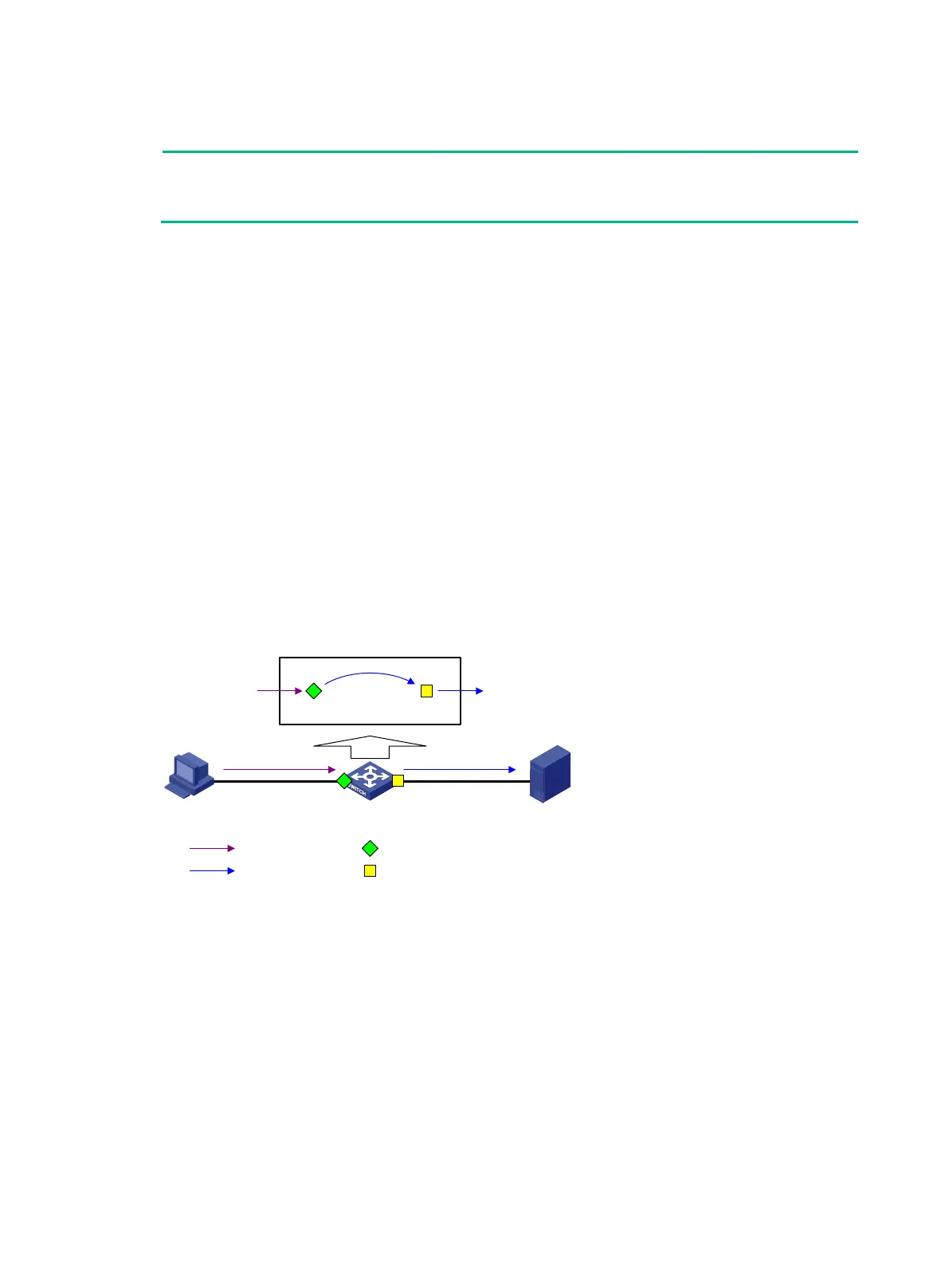157
probe VLAN. For more information about the reflector port, egress port, remote probe VLAN, and
Layer 2 remote port mirroring, see "Port mirroring classification and implementation."
On port mirroring devices, all ports except source, destination, reflector, and egress ports are called
common ports.
Port mirroring classification and implementation
Port mirroring includes local port mirroring and remote port mirroring.
• Local port mirroring—The mirroring sources and the mirroring destination are on the same
device.
• Remote port mirroring—The mirroring sources and the mirroring destination are on different
devices.
Local port mirroring
In local port mirroring, the following conditions exist:
• The source device is directly connected to a data monitoring device.
• The source device acts as the destination device to forward mirrored packets to the data
monitoring device.
A local mirroring group is a mirroring group that contains the mirroring source and the mirroring
destination on the same device.
Figure 60 Local port mirroring implementation
As shown in Figure 60, the source port GigabitEthernet 1/0/1 and the monitor port GigabitEthernet
1/0/2 reside on the same device. Packets received on GigabitEthernet 1/0/1 are copied to
GigabitEthernet 1/0/2. GigabitEthernet 1/0/2 then forwards the packets to the data monitoring device
for analysis.
Remote port mirroring
In remote port mirroring, the following conditions exist:
• The source device is not directly connected to a data monitoring device.
• The source device copies mirrored packets to the destination device, which forwards them to
the data monitoring device.
• The mirroring sources and the mirroring destination reside on different devices and are in
different mirroring groups.
Host
GE1/0/1
Data monitoring
device
GE1/0/1
Mirroring process
in the device
Source port
Monitor port
GE1/0/2
GE1/0/2
Original packets
Device
Mirrored packets

